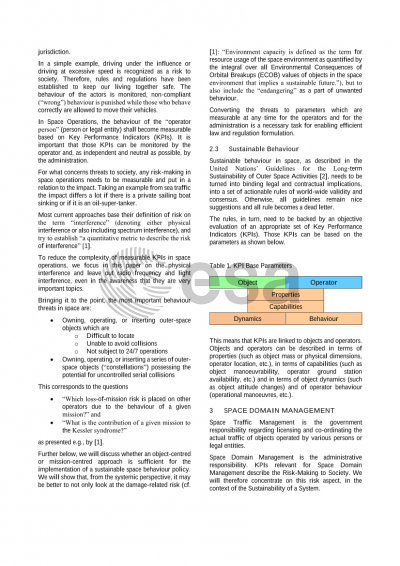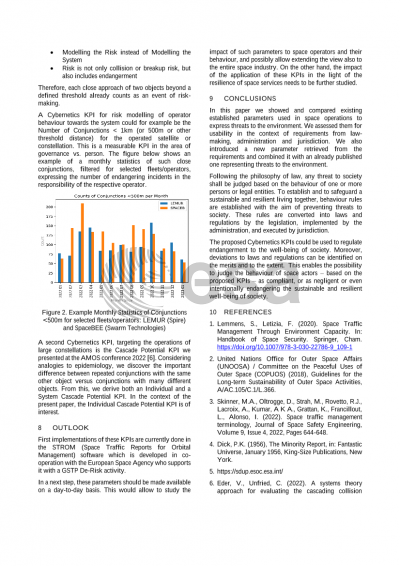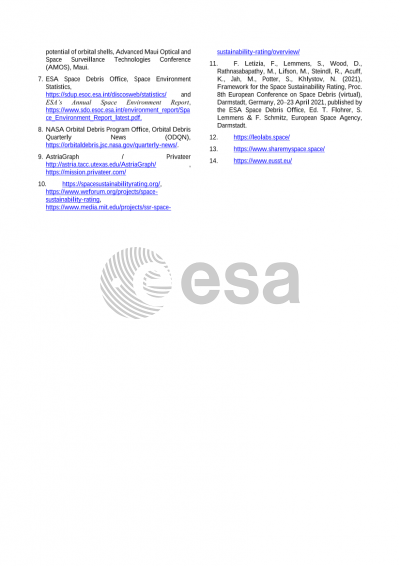Document details

Abstract
The dramatic change in human exploitation of space resources over the last few years, commonly summarized as “New Space”, has also led to a changing situational perception regarding valuable assets placed in earth orbits.
The “New Space” (R)Evolution has many aspects: A liberalization of markets, a move towards commercialization of many space activities which were formerly restrícted to military and government agencies, and a technology leap introducing small Sats, Cube Sats and Nano Sats led to the possibility to launch from almost anywhere with a now completely different scalability of launchers. The manufacturing of satellites which had been almost a handcraft work of single pieces now became industrialized, allowing to produce multiple satellites per day instead of a single satellite per month. The combination of all of the above was the key to commercial and industrial feasibility of mega-constellations. That move in turn shifted a big portion of the focus of new satellite launches from GEO to LEO.
In the same way as traffic increases by an order of magnitude, the related risk for the assets placed in orbit changes. A number of approaches have been taken in the recent past to assess and quantify the risk (a) the current orbital object population infers on an existing object and (b) a single exisiting or new object infers on the other objects. This includes concepts such as the definition of orbital lanes, the modelling of orbital density functions and their evolution, and the inclusion of operations aspects to define and benchmark quality metrics for orbital resource use. The first implementations of these approaches have recently started to provide their first outputs, which is a good point in time to have a look how the key performance indicators defined to describe orbital asset risk meet the needs of operators, regulators and other stakeholders.
We will show how these approaches cover certain aspects of a necessary basis for Space Domain Management decisions, but also come with a number of blind spots or questions not answered by the approach. We will show how complementary approaches taking into account collections of empiric data and system-oriented data analytics can provide a strongly needed additional perspective to increase Space Domain Awareness not only as an awareness of the current situation, but also as an awareness of the underlying system dynamics.
That way we move from a pure per-object risk forecast or a per-operator sustainable behaviour benchmarking to a better and holistic understanding of the potential of Space Traffic Management actions. This opens the door to a synergistic application of model-based forecasting and empiric data evolution analytics to plan, assess and enforce sustainability and resilience policies in Outer Space.
Preview








